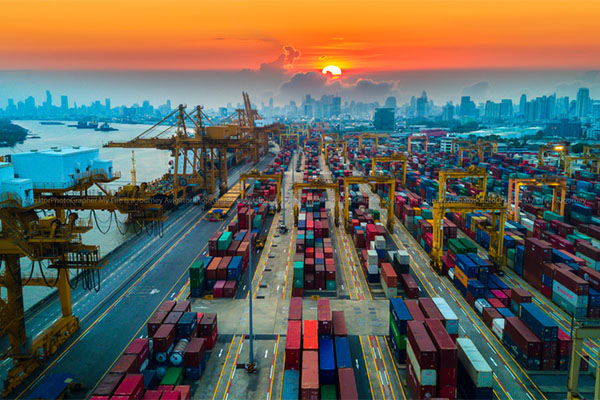Port Tracker report calls for strong volumes in the summer months
United States-bound retail container import volumes are seeing strong spring volumes, setting a new record in the process, as retailers focus on bringing in merchandise ahead of increasing costs and supply chain issues, according to the new edition of the Port Tracker report, which was issued late last week by the National Retail Federation (NRF) and maritime consultancy Hackett Associates.
The ports surveyed in the report include: Los Angeles/Long Beach; Oakland; Tacoma;
Seattle; Houston; New York/New Jersey; Hampton Roads; Charleston, and Savannah; Miami; Jacksonville; and Fort Lauderdale, Fla.-based Port Everglades.
Authors of the report explained that cargo import numbers do not correlate directly with retail sales or employment because they count only the number of cargo containers brought into the country, not the value of the merchandise inside them, adding that the amount of merchandise imported provides a rough barometer of retailers’ expectations.
“Retailers are importing record amounts of merchandise to meet consumer demand, but they also have an incentive to stock up before inflation can drive costs higher,” NRF Vice President for Supply Chain and Customs Policy Jonathan Gold said in a statement. “Whether it’s freight costs or the wholesale cost of merchandise, money retailers save is money that can be used to hold down prices for their customers during a time of inflation. In addition, retailers are preparing for any potential disruptions because of the West Coast port labor negotiations, which are set to begin next week. NRF has previously encouraged the parties to remain at the table and not engage in disruptions if a new contract is not reached by the time the current agreement expires July 1.”
For March, the most recent month for which data is available, import volume—at 2.34 million TEU (Twenty-Foot Equivalent Units)—increased 10.8% over February and saw a 3.2% annual increase. And it also set a new monthly record, topping March 2021’s 2.33 million TEU.
For the following months, Port Tracker issued the following projections:
- April, at 2.27 million TEU, up 5.7% annually;
- May, at 2.3 million TEU, down 1.4% annually, but would be the third-highest month on record;
- June, at 2.29 million TEU, up 6.6 annually;
- July, at 2.31 million TEU, up 5.3% annually;
- August, at 2.29 million TEU, up 0.9% annually; and
- September, at 2.15 million TEU, up 0.3%
Port Tracker pegged the first six months of 2022 to come in at 13.5 million TEU, up from a previous estimate of 13.1 million TEU, which would represent a 5.1% annual gain.
In a recent interview with LM, NRF’s Gold explained that consumer demand remains high and continues to drive solid import volumes.
“Throughout the pandemic, we have seen a $1 trillion swing, in consumer spending, from services to goods,” he said. “The consumer is still out there purchasing online or in store as things open up again and will continue to do more and more of that. I think consumers are looking to spend more on services now that all of the mask mandates are gone and things are opening back up. But inflation and gas prices are a factor, too.”
As for Port Tracker data in the coming months, he said that gains are expected but not to the same extent in 2021, which often saw double-digit increases, related to more moderate annual comparisons.
Hackett Associates Founder Ben Hackett wrote in the report that inflation remains a major concern relevant to import volumes, noting that, from an economic standpoint, inflation is the main worry, as far as international trade and what consumer demand will be, coupled with inflation being at its highest level in decades across most countries and the fear of shortages is driving it higher.
“Consumer spending is growing faster than income growth, perhaps as shoppers buy ahead of expected rising prices,” wrote Hackett. “Doing so can reduce the savings ratio, but most consumers have plenty of savings built up following the pandemic. Meanwhile, importers are doing much the same as they continue to replenish their inventories. Doing so will protect them against potentially rising freight costs, further delays in the supply chain, and complications in upcoming labor negotiations at US West Coast ports.”













